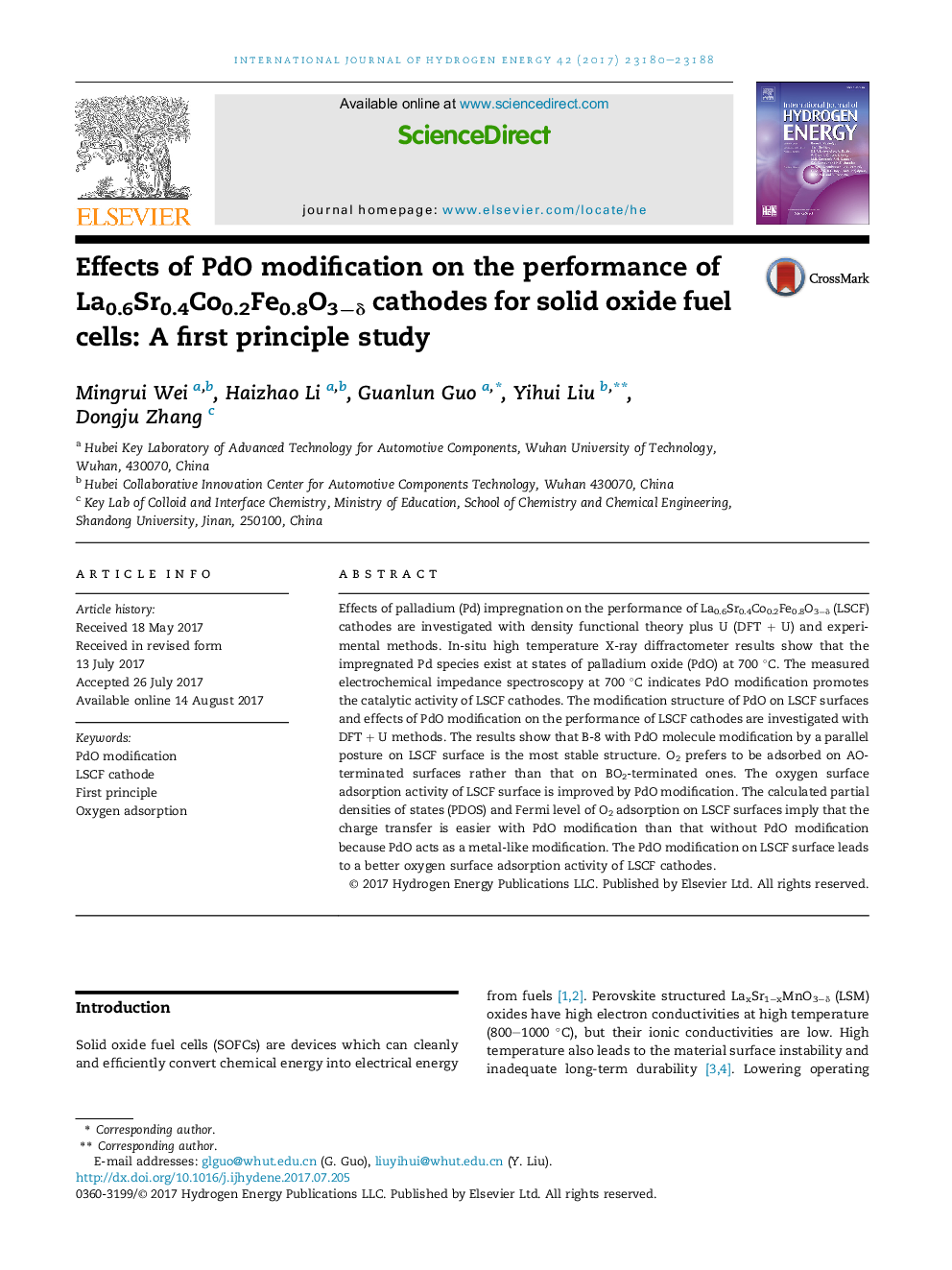| Article ID | Journal | Published Year | Pages | File Type |
|---|---|---|---|---|
| 5145304 | International Journal of Hydrogen Energy | 2017 | 9 Pages |
â¢Impregnated Pd species on LSCF surface are identified at 700 °C.â¢PdO modification can also improve the performance of LSCF cathodes at temperature at 700 °C.â¢The interaction structure between PdO and LSCF surface are investigated by DFT methods.â¢Oxygen adsorption activity of AO-terminated surface is better than that of BO2-terminated surface.
Effects of palladium (Pd) impregnation on the performance of La0.6Sr0.4Co0.2Fe0.8O3âδ (LSCF) cathodes are investigated with density functional theory plus U (DFT + U) and experimental methods. In-situ high temperature X-ray diffractometer results show that the impregnated Pd species exist at states of palladium oxide (PdO) at 700 °C. The measured electrochemical impedance spectroscopy at 700 °C indicates PdO modification promotes the catalytic activity of LSCF cathodes. The modification structure of PdO on LSCF surfaces and effects of PdO modification on the performance of LSCF cathodes are investigated with DFT + U methods. The results show that B-8 with PdO molecule modification by a parallel posture on LSCF surface is the most stable structure. O2 prefers to be adsorbed on AO-terminated surfaces rather than that on BO2-terminated ones. The oxygen surface adsorption activity of LSCF surface is improved by PdO modification. The calculated partial densities of states (PDOS) and Fermi level of O2 adsorption on LSCF surfaces imply that the charge transfer is easier with PdO modification than that without PdO modification because PdO acts as a metal-like modification. The PdO modification on LSCF surface leads to a better oxygen surface adsorption activity of LSCF cathodes.
